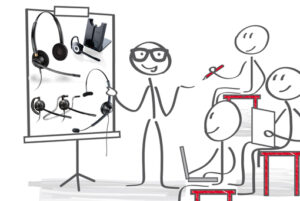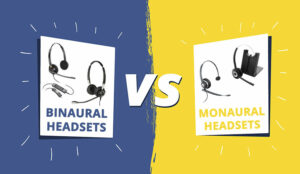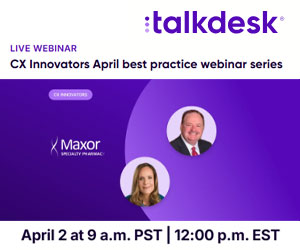Holger Reisinger of Jabra discusses how contact centres and other workplaces can reduce background noise through heat mapping.
The humble headset is undergoing a radical transformation – from mere communications device to powerful source of data with the potential to transform the workplace.
The idea of heat mapping is to observe where employees typically congregate to determine whether the physical work environment is organised as efficiently as possible – and reconfigure the space if it isn’t.
Heat mapping is important because, ever since the walls came down and office spaces opened up, organisations have struggled to make the workplace a productive environment.
They’ve tried everything – sound-absorbing materials, dedicated quiet areas, codes of conduct, even lots of leafy foliage. Despite their efforts, the open office space remains the place employees love to hate.
Help may finally be on the way – and from a relatively unlikely source: Headsets.
That’s right. Headsets. And I’m not just referring to noise-cancelling features that erase the din of chatty co-workers and overworked printers. No, I’m talking about powerful intelligence that organisations can use to create a more productive, efficient and quiet work environment.
The Latest Digital Smart Device
Beneath their utilitarian exteriors, new-generation headsets are in fact digital smart devices, packed with sophisticated digitalisation that enable them to capture a treasure trove of previously untapped data such as background sound levels.
With the growing pace with which phone conversations and virtual meetings are being digitalised by UC solutions like Skype and Skype for Business, headsets have become powerful tools in the modern workplace. Their advanced microphone technology makes them the perfect instruments to gather data about the office sound environment – far better than smartphones, in fact.
All this makes headsets the perfect weapon for taking on the two biggest time-wasters and frustrations in call-intensive environments – too much noise and too many interruptions, each of which was cited by 25 percent of workers as the top office-related gripe in contact-centric workplaces.
Headsets enable us to take heat mapping to an entirely new level of precision. Rather than merely observing the office environment, we can use these devices to gather unbiased data about the workplace and, perhaps most important, capture detailed information about the intensity of background noises.
Also, instead of striving to get rid of noise in the office (which is virtually impossible), we can gather and analyse data from each headset to construct a detailed map of noise hotspots and reconfigure the workspace to relocate those noisy areas or employees elsewhere.
A “Can’t Miss” Developer Opportunity
For businesses, headsets offer a golden opportunity to convert ordinary data into powerful insights – and then act on it to create a better work environment and deliver higher-quality customer service. Achieving this goal, however, requires developers to come in and help convert the data into new insights. Without this, the data remains just that: datapoints that serve nobody.
The opportunity is somewhat reminiscent of when smartphones burst onto the scene a decade ago. Knowing a great thing when they saw it, developers almost immediately began writing all kinds of cool, useful (and, yes, some not-so-useful) apps to broaden their appeal and harness the power within these devices. The results are evident today in the millions of news, weather, sports, shopping, travel and countless other apps packed into our smartphones.
If even a small fraction of the developer community were to embrace the opportunity today’s digital headsets represent, organisations and workers stand to benefit tremendously. (So permit me to extend an offer: If you’re a developer who is interested in exploring the outstanding opportunity digital headsets represent, we’d welcome your input. Just head over to our developer forum and let’s get started!)
We can’t fully escape the noise and distractions inherent in today’s open office spaces. But the combination of digital headsets and some savvy developers looking for the next big opportunity offer the promise of at least some peace and quiet for today’s workers and organisations.
Author: Guest Author
Published On: 11th Jan 2019 - Last modified: 15th Jan 2019
Read more about - Guest Blogs, Jabra




































